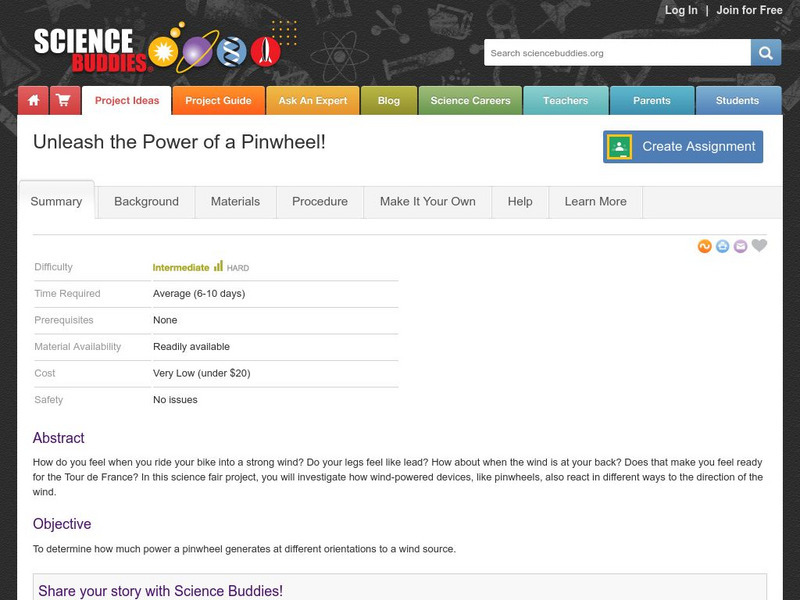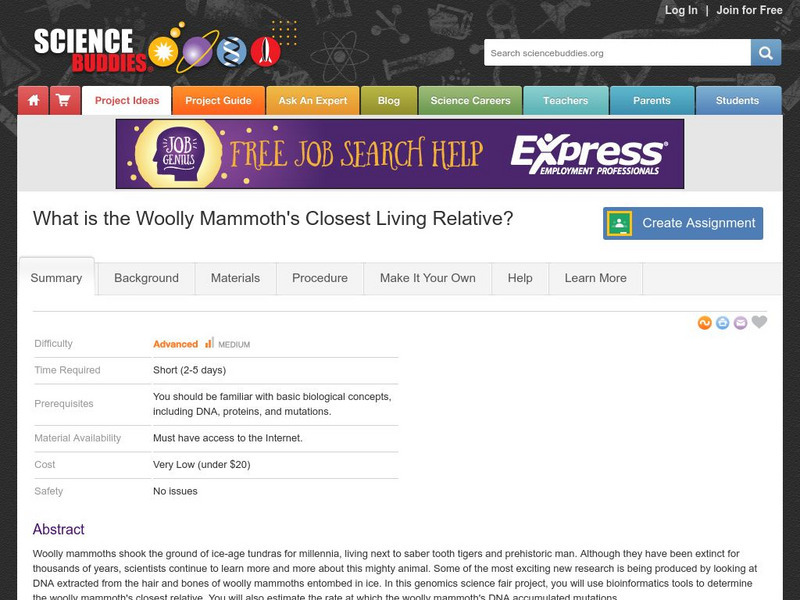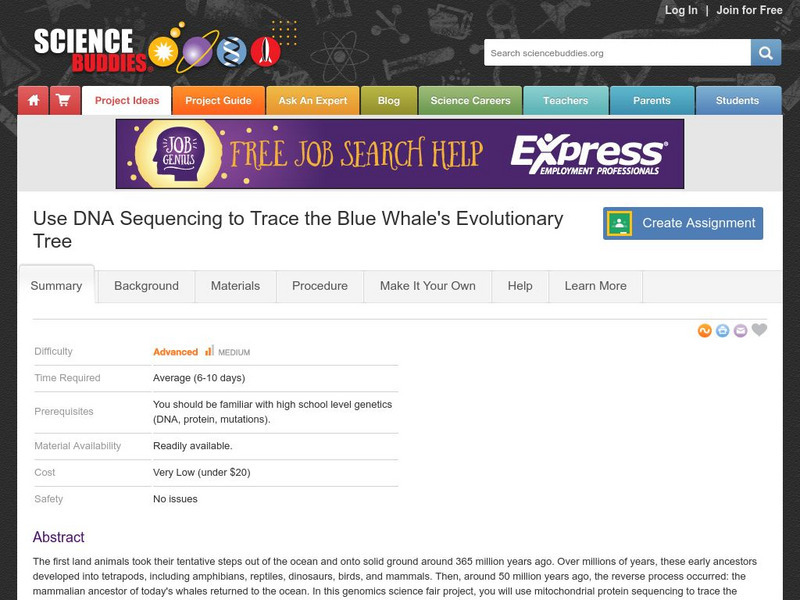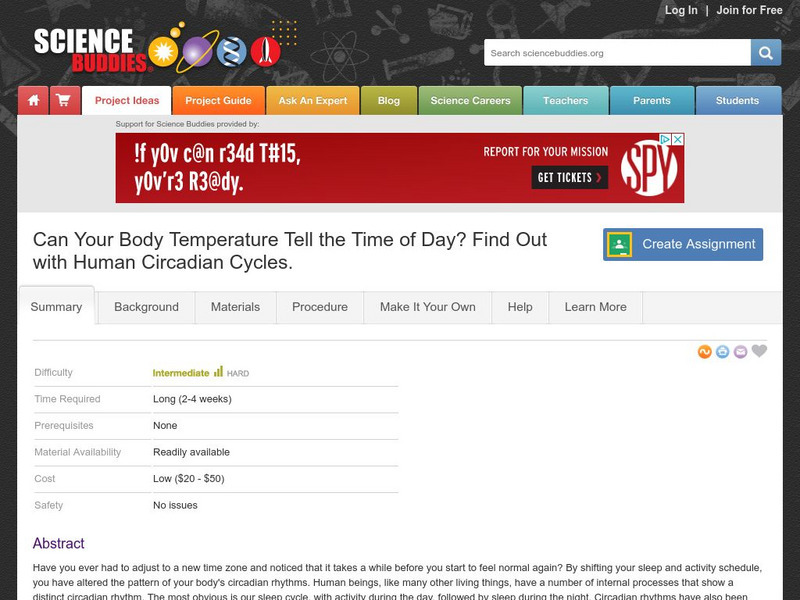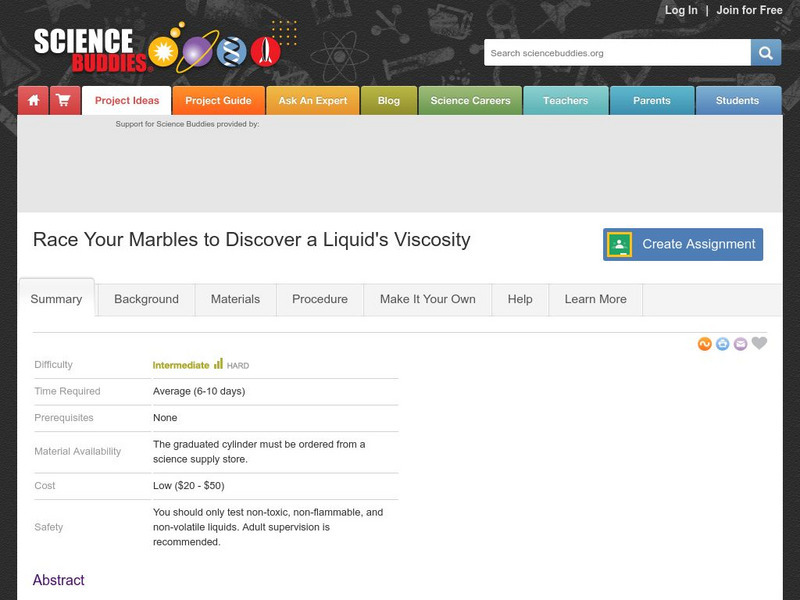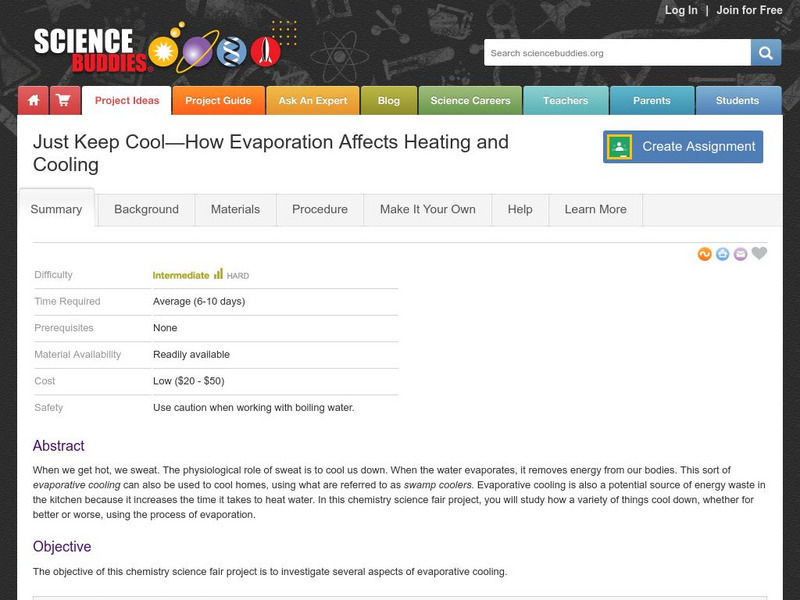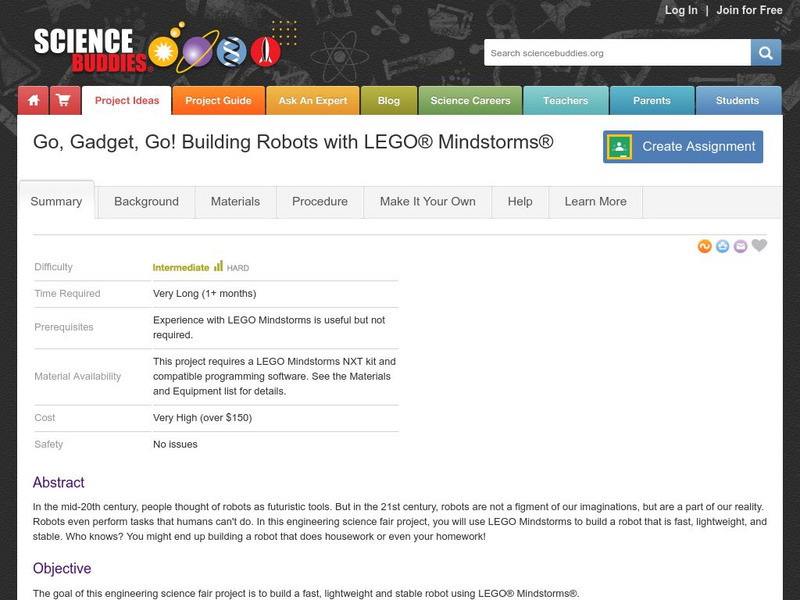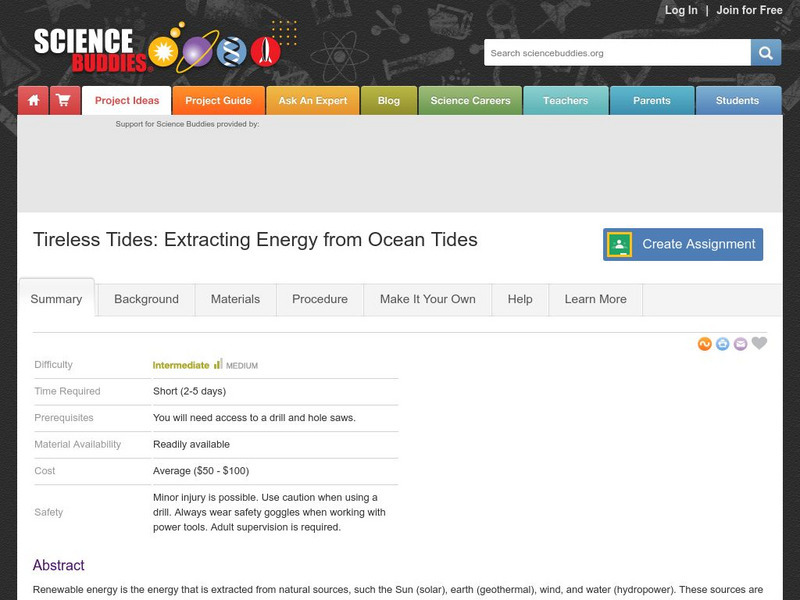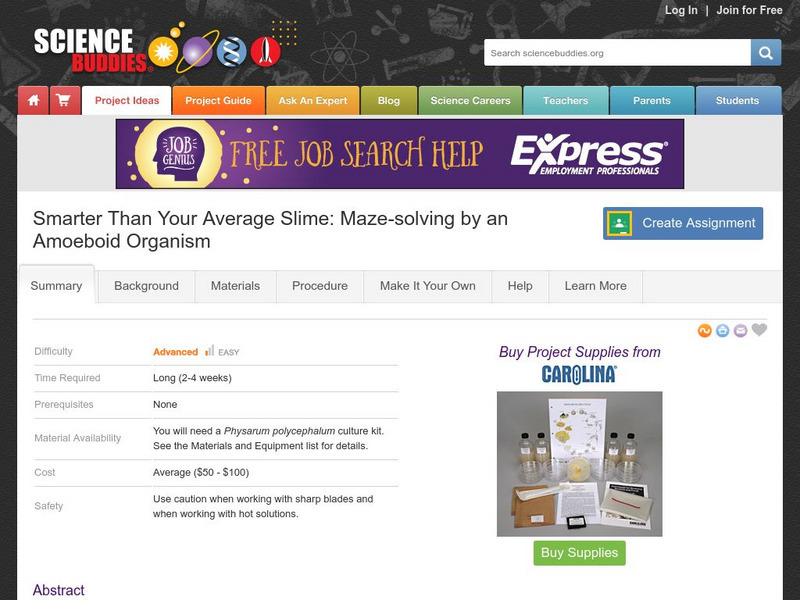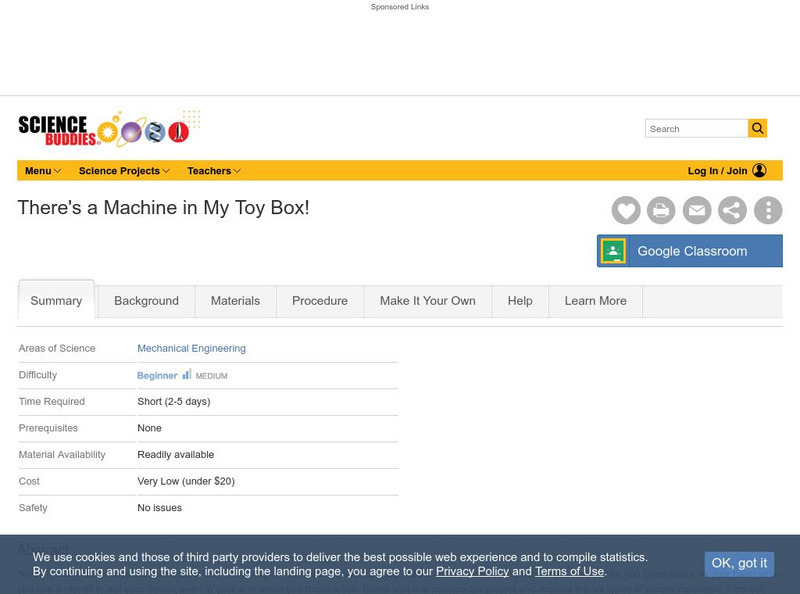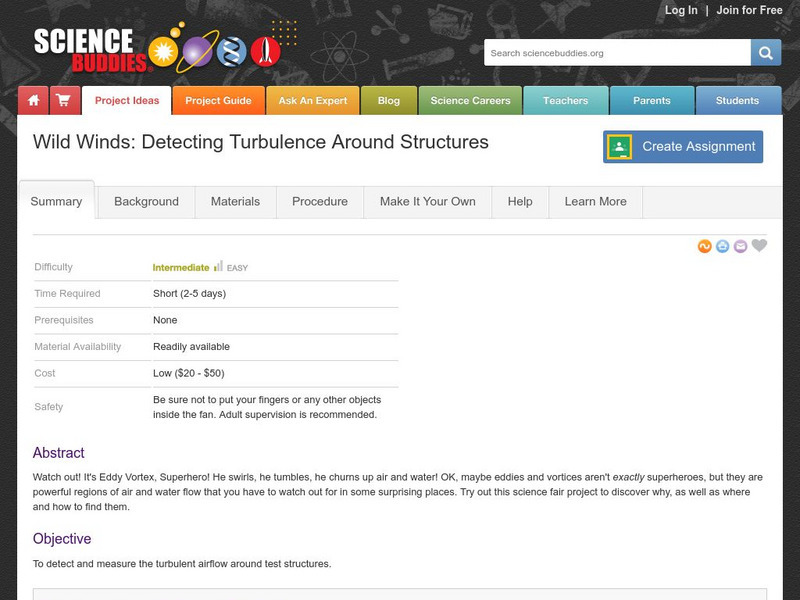Science Buddies
Science Buddies: Unleash the Power of a Pinwheel!
In this science fair project, you will learn more about wind-powered devices, like pinwheels. Much like pinwheels, we react in different ways to the direction of the wind when we ride bikes, or even try to walk.
Science Buddies
Science Buddies: What Is the Woolly Mammoth's Closest Living Relative?
Although Woolly Mammoths have been extinct for thousands of years, scientists continue to learn more and more about this mighty animal. Some of the most exciting new research is being produced by looking at DNA extracted from the hair...
Science Buddies
Science Buddies: Use Dna Sequencing to Trace the Blue Whale's Evolutionary Tree
Around 50 million years ago, the mammalian ancestor of today's whales returned to the ocean. In this genomics science fair project, you will use mitochondrial protein sequencing to trace the evolution of whales and identify their closest...
Science Buddies
Science Buddies: Can Your Body Temperature Tell the Time of Day?
If you have ever had to adjust to a new time zone, you have noticed that it takes a while before you start to feel normal again. By shifting your sleep and activity schedule, you have altered the pattern of your body's circadian rhythms....
Science Buddies
Science Buddies: I See a Full Moon Rising, and Shrinking, or Do I?
The moon appears bigger at the horizon just as it is rising over the treetops, than it does later in the evening when it is overhead. This is because our perception of its size changes based on where it is in the sky. In this human...
Science Buddies
Science Buddies: Race Your Marbles to Discover a Liquid's Viscosity
How do you like your mashed potatoes? Thin and whipped smooth? Or thick and mashed into chunks? Your mouth checks out not just the taste of your food, but its viscosity, or how it flows on your tongue, every time you take a bite. In this...
Science Buddies
Science Buddies: How Sweet It Is: Hummingbird Food Preferences
Do you like to watch hummingbirds? Have you ever wondered why there is specialty hummingbird food? What is it about the food that makes it so appealing? In this zoology science fair project, you will observe these remarkable creatures...
Science Buddies
Science Buddies: Ask a Cricket, 'What Is the Temperature?'
A cricket as a thermometer? Yes, that's right. In this science fair project, you'll investigate how the chirps of these tiny creatures can do more than lull you to sleep-they can tell you the temperature.
Science Buddies
Science Buddies: Neanderthals, Orangutans, Lemurs & You; A Primate Reunion
You have probably seen figures showing how human beings are related to chimpanzees, gorillas, and other primates. In this genomics science fair project, you will use bioinformatics tools to generate your own primate family tree.
Science Buddies
Science Buddies: Bring on the Heat! Investigating Exothermic Reaction Rates
Have you ever pulled a muscle or just been sore after a long day of work or exercise? Hot showers are great, but maybe you've used the more convenient heat packs. Heat packs, which you can buy at grocery or drug stores to soothe aching...
Science Buddies
Science Buddies: Just Keep Cool How Evaporation Affects Heating and Cooling
When we get hot, we sweat. The physiological role of sweat is to cool us down. When the water evaporates, it removes energy from our bodies. This sort of evaporative cooling can also be used to cool homes, using what are referred to as...
Science Buddies
Science Buddies: Hydrogen Peroxide on Plant Root Cuttings & Seed Germination
Hydrogen peroxide (often used as a disinfectant) has also been approved for use in pesticides. This science fair project investigates whether hydrogen peroxide has any effects on seed germination or on roots of plant cuttings.
Science Buddies
Science Buddies: Study Chirality With a Homemade Polarimeter
Some molecules can be either left- or right-"handed." The left- and right-handed molecules have the same number and type of atoms, and their chemical structures look identical, but they are actually mirror images of each other. Many...
Science Buddies
Science Buddies: Fast Food: Can Peppermint Improve Reaction Times?
Did you know that some teachers give their students a peppermint candy on state testing days? Is it to give the kids sweet-smelling breath? Or are the teachers hoping for something more on the important testing day? In this human biology...
Science Buddies
Science Buddies: Go, Gadget, Go! Building Robots With Lego Mindstorms
In the mid-20th century, people thought of robots as futuristic tools. But in the 21st century, robots are not a figment of our imaginations, but are a part of our reality. Robots even perform tasks that humans can't do. In this...
Science Buddies
Science Buddies: The Height Limits and Linearity of Bouncy Balls
You might think that plants and animals have little in common with batteries, springs, or slingshots, but they actually do have something in common. Both living and non-living things store and transfer energy from one form to another. In...
Science Buddies
Science Buddies: Vines & Spines: Thigmotropism in Morning Glory Tendrils
We tend to think of plants as immobile, but the tendrils of a vine, such as the morning glory, actually move in response to touch. Tendrils wrap around structures, which give the plant something to grow on. In this science fair project,...
Science Buddies
Science Buddies: Balloon Morphing: How Gases Contract and Expand
Expanding gases are everywhere, from the kitchen to the cosmos. You've tasted their pleasures every time you've eaten a slice of bread, bitten into a cookie, or sipped a glass of soda. In this chemistry science fair project, you'll...
Science Buddies
Science Buddies: Tireless Tides: Extracting Energy From Ocean Tides
Renewable energy is the energy that is extracted from natural sources, such the Sun (solar), earth (geothermal), wind, and water (hydropower). These sources are renewable because they can be replenished by the same natural sources within...
Science Buddies
Science Buddies: Smarter Than Your Average Slime: Maze Solving by an Amoeboid
In this science fair project, grow the acellular slime mold Physarum polycephalum and test its ability to find the shortest path through a maze.
Science Buddies
Science Buddies: The Strength of an Electromagnet
Has anyone ever told you that you have a magnetic personality? Have you ever heard that opposites attract? These common phrases are both based on the properties of magnets and magnetic electricity. In this science fair project, learn how...
Science Buddies
Science Buddies: Using Pennies to Test How P H Affects Copper Corrosion
In this science fair project, use a color-based reaction to test how pH affects copper corrosion in pennies.
Science Buddies
Science Buddies: There's a Machine in My Toy Box!
Simple machines are everywhere, even many of your toys are simple machines. Come visit this science fair project and explore the six types of simple machines. Find out how many are hiding under the hinged lid (yes, another simple...
Science Buddies
Science Buddies: Wild Winds: Detecting Turbulence Around Structures
Watch out. It's Eddy Vortex, Superhero. He swirls, he tumbles, he churns up air and water. OK, maybe eddies and vortices aren't exactly superheroes, but they are powerful regions of air and water flow that you have to watch out for in...
Other popular searches
- Science Fair Projects Ideas
- Science Fair Projects Topics
- Motion Science Fair Projects
- Coke Science Fair Projects
- Food Science Fair Projects
- Sports Science Fair Projects
- Cool Science Fair Projects
- Csi Science Fair Projects
- Edible Science Fair Projects
- Casi Science Fair Projects
